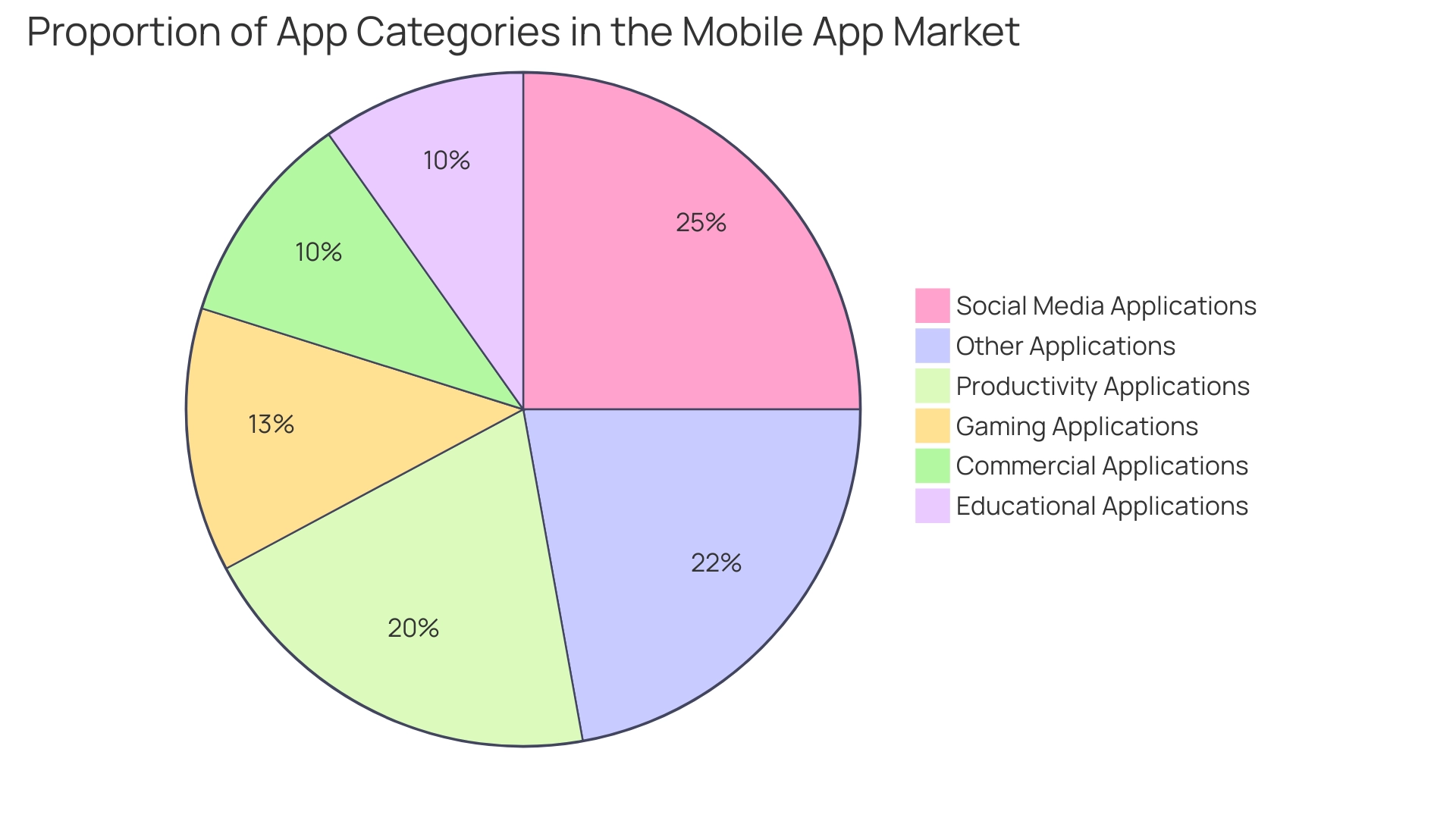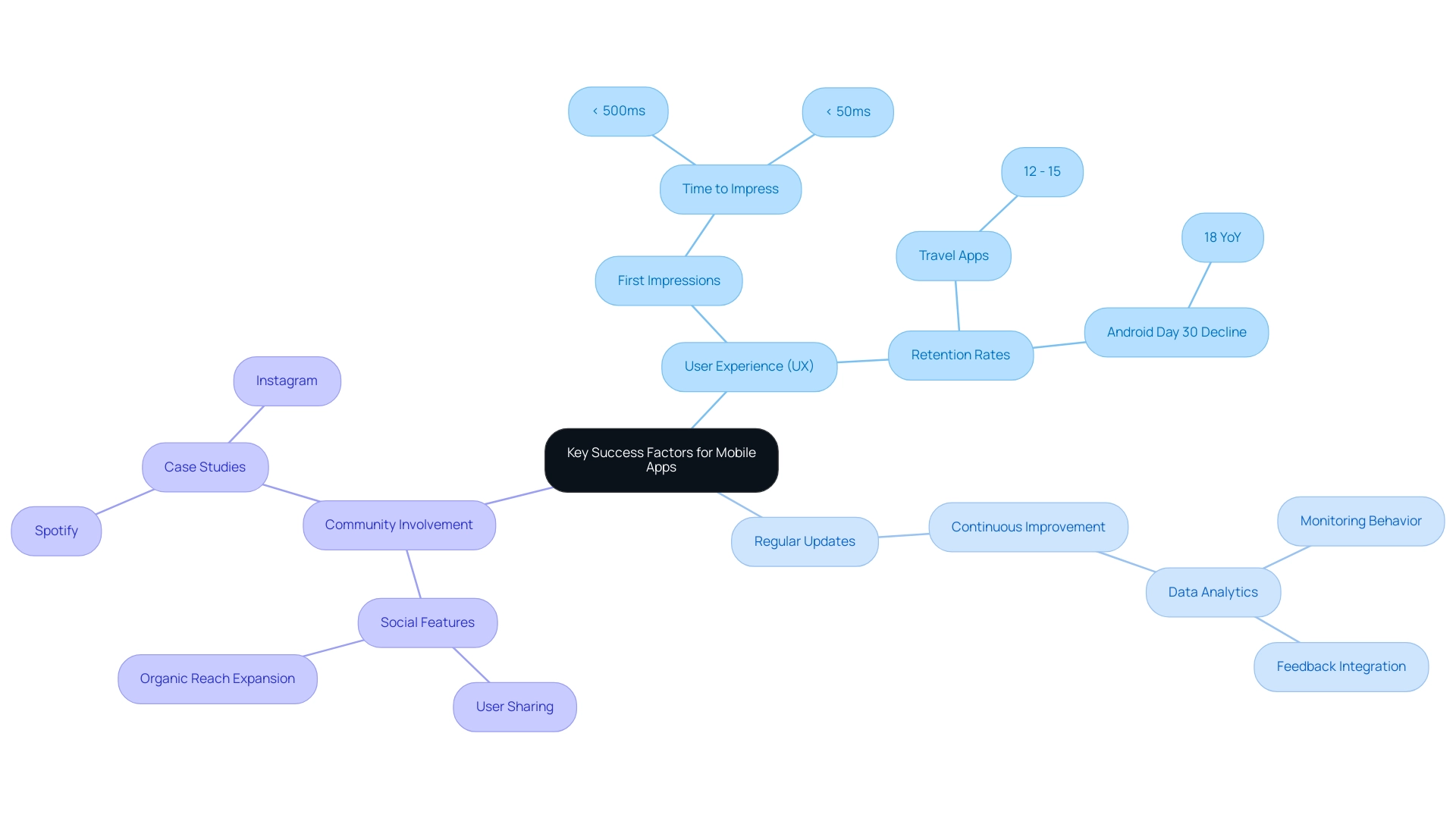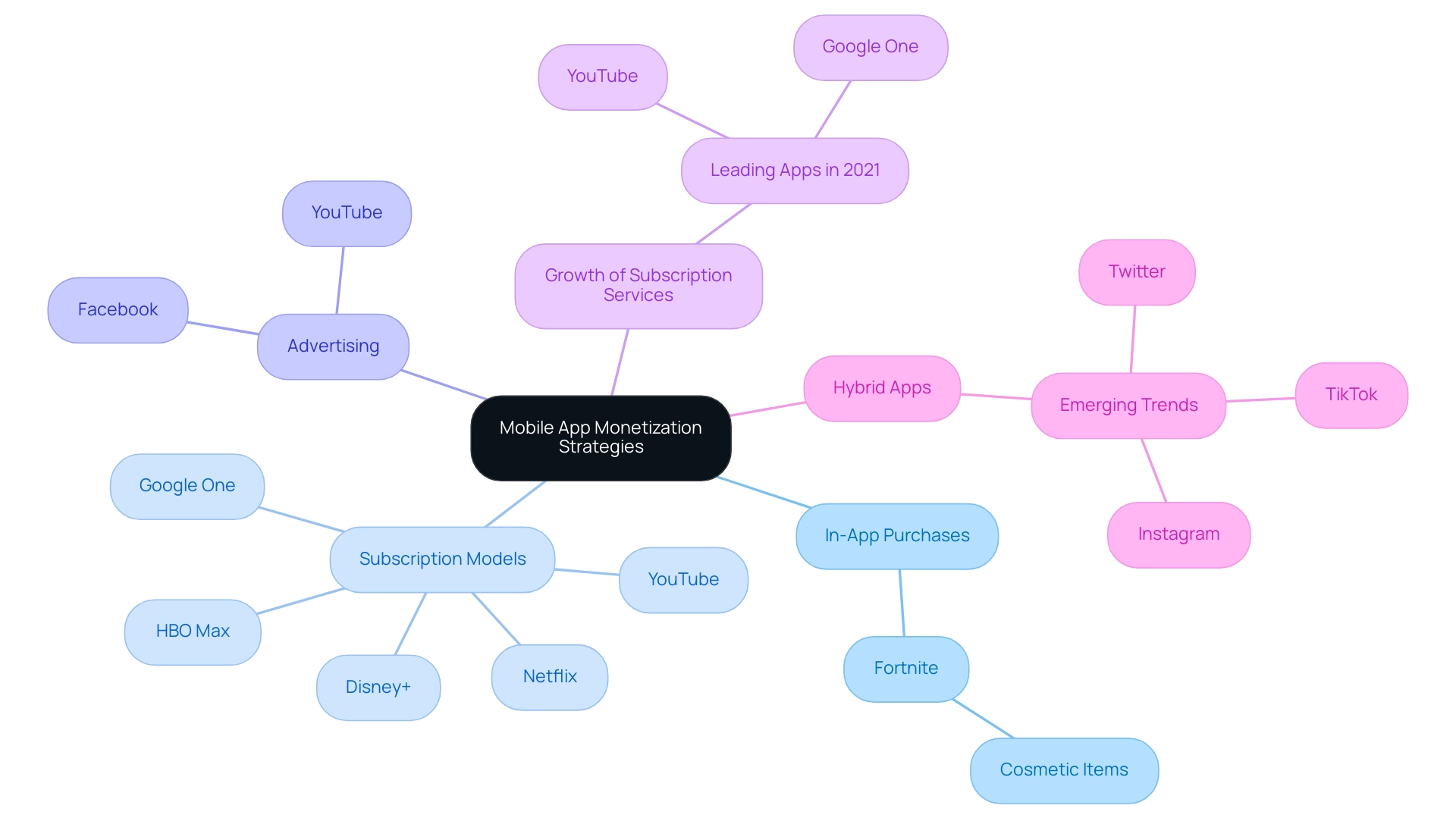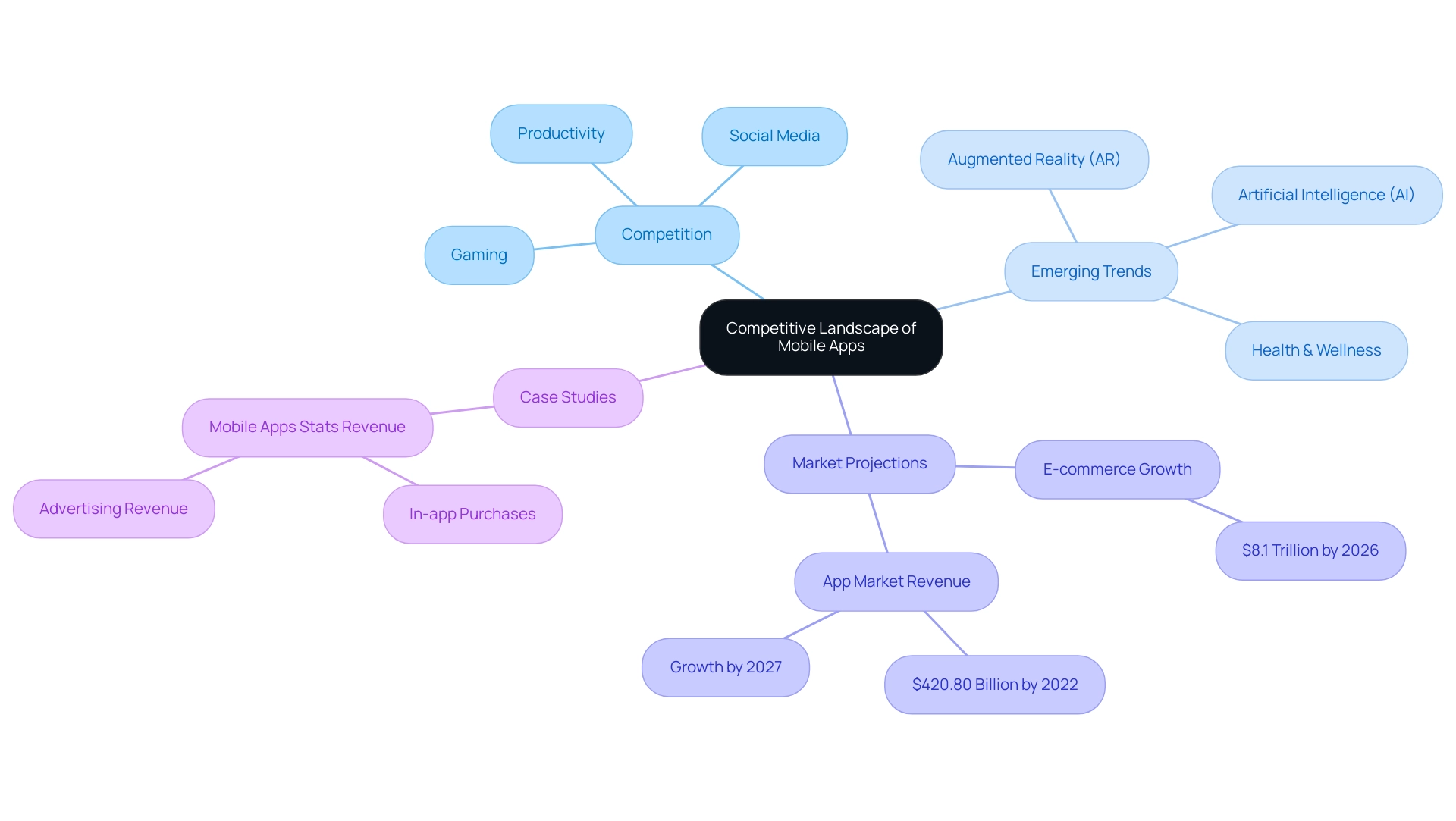Introduction
In the rapidly evolving landscape of mobile applications, a select group consistently rises to the top, not just in downloads but in revenue generation. Apps like TikTok, PUBG Mobile, and Candy Crush Saga have set the benchmark for success, employing a strategic blend of engaging content and effective user retention tactics.
As the mobile app industry continues to thrive, understanding the key success factors and monetization strategies behind these high-grossing apps is essential for developers and marketers alike. With the gaming sector leading the charge, accounting for a significant share of downloads and revenue, the need for innovative approaches to user experience, community engagement, and market positioning has never been more critical.
This article delves into the dynamics of the mobile app ecosystem, exploring the elements that drive success and the strategies that can pave the way for new entrants to navigate this competitive arena effectively.
Overview of Top-Grossing Mobile Apps
The mobile app industry has experienced remarkable growth, with a select few applications consistently standing out as the highest grossing mobile apps across multiple platforms. Remarkably, platforms like TikTok, PUBG Mobile, and Candy Crush Saga are considered some of the highest grossing mobile apps, having led download rankings and created substantial income sources. Recent reports indicate that the highest grossing mobile apps excel through a strategic blend of engaging content and robust user retention tactics, ensuring their sustained prominence in a competitive market.
As of Q3 2022, gaming applications alone represented 12.68% of all software on the Apple App Store, underscoring their dominance in both downloads and income generation. Furthermore, with an average income per download anticipated to reach $1.79 USD, the financial potential of these applications is undeniable. For aspiring developers and marketers, understanding the success factors behind these leading applications is essential for navigating and penetrating this fiercely competitive landscape.
The case study on the most popular application store categories further reinforces the significance of gaming software in driving both engagement and revenue.

Key Success Factors for Mobile Apps
The success of mobile applications depends on several essential factors: experience (UX), regular updates, and community involvement. Research indicates that applications prioritizing intuitive design and seamless functionality can significantly enhance user retention. It takes less than 500ms to create a good first impression, emphasizing the significance of UX in mobile applications.
For instance, travel applications currently experience retention rates between 12% and 15%, highlighting the potential for improvement in this area. In contrast, Android statistics for Day 30 indicate a worrying decline of 18% YoY, highlighting the difficulties encountered by mobile applications in keeping their audience. As noted in recent analyses, utility apps in the APAC region boast the highest retention rates at 19%, further underscoring the importance of usability in various app categories.
Moreover, integrating social features fosters a sense of community, encouraging individuals to share their experiences and expanding the app's reach organically. Companies like Spotify and Instagram exemplify these principles by leveraging data analytics to monitor behavior, enabling continuous enhancement of their offerings based on feedback. This commitment to regular updates and engagement not only enriches the user experience but also boosts retention rates by addressing common pain points that can lead to user churn.
Identifying and improving these retention barriers through data analysis can reveal key areas for improvement, making it essential for developing successful mobile applications in 2024 and beyond.

Monetization Strategies: How Apps Generate Revenue
Mobile app monetization strategies exhibit considerable diversity, with the most prevalent methods being in-app purchases, subscription models, and advertising. For example, popular games like Fortnite leverage in-app purchases to sell cosmetic items, allowing players to enhance their gaming experience while generating significant revenue. In contrast, streaming services such as Netflix depend heavily on subscription fees, capitalizing on the steady income they provide.
Notably, the subscription landscape has witnessed substantial growth; in 2021, YouTube and Google One emerged as the leading subscription apps in both the US and global markets. This trend extends to video-on-demand platforms like Disney+ and HBO Max, which have also gained traction, reflecting a broader shift in audience preferences.
Additionally, advertising remains a lucrative monetization avenue, exemplified by platforms such as Facebook and YouTube, which incorporate banner and video ads to boost their revenue streams. Developers must carefully consider their target audience and market positioning when selecting a monetization strategy. The choice between in-app purchases and subscriptions often reflects consumer expectations and behavior.
As highlighted in recent insights, 'Paying participants is a lagging indicator of game health, as new daily active individuals typically take around three days to convert, with a prolonged conversion tail extending across 60 days.' This highlights the significance of aligning revenue models with engagement patterns to promote long-term success in the competitive mobile app marketplace.
Furthermore, the evolution of monetization strategies is exemplified by the rise of hybrid apps, which are less than two years old but have rapidly gained popularity. Social media platforms like Twitter, TikTok, and Instagram are also increasingly adopting subscription models to enhance engagement and attract content creators, illustrating broader trends in monetization strategies beyond just gaming and streaming services.

The Competitive Landscape of Mobile Apps
The mobile app market is defined by fierce competition, with millions of applications, including the highest grossing mobile apps, vying for engagement across various categories such as gaming, social media, and productivity. With over 20 years of experience in tailoring e-commerce solutions, we have a proven track record of significantly improving critical KPIs such as retention rates and Average Order Value (AOV) for our clients. Our expertise covers diverse sectors, enabling us to develop solutions that not only improve user engagement but also generate additional income by assisting businesses in achieving their internal objectives.
As the landscape evolves rapidly, driven by emerging trends like augmented reality (AR) and artificial intelligence (AI), understanding these dynamics becomes crucial for developers aiming to remain relevant. Industry insights reveal that in 2021 alone, over 2 million new applications were introduced, showcasing the relentless pace of innovation. This environment necessitates that developers stay informed about trends to differentiate their offerings effectively.
Furthermore, as the e-commerce market is projected to soar to $8.1 trillion by 2026, grasping the competitive positioning of similar apps is vital. This knowledge helps identify market gaps and tailor solutions that resonate with community needs. A notable example is the surge in fitness applications during the pandemic, catering to the rising consumer focus on health and wellness, ultimately inspiring new waves of app development.
As the app market is expected to generate an impressive $420.80 billion in sales by 2022, emphasizing in-app purchases and advertising revenue, effective market research remains pivotal for maximizing the financial performance of the highest grossing mobile apps. Moreover, with projections indicating that the app market will continue to grow significantly by 2027, the integration of blockchain technology is becoming increasingly relevant, potentially impacting economic transactions and shaping future app development strategies.

Conclusion
The mobile app industry is a thriving landscape, with leading applications like TikTok, PUBG Mobile, and Candy Crush Saga setting the standard for success. These apps demonstrate the critical importance of engaging content, user experience, and community involvement. As gaming continues to dominate, understanding the key success factors and monetization strategies is essential for developers and marketers aiming to make their mark.
User experience, regular updates, and community engagement are vital for enhancing user retention. Apps that prioritize intuitive design can significantly boost engagement, while social features encourage organic growth through user interaction. Utilizing data analytics allows developers to continuously refine their offerings, addressing user needs and retention challenges effectively.
Monetization strategies are crucial, encompassing:
- In-app purchases
- Subscriptions
- Advertising
Developers must align their revenue models with user expectations to maximize profitability. The rise of hybrid apps and subscription services highlights the need to stay informed about market trends and dynamics.
In summary, excelling in the mobile app ecosystem requires a deep understanding of user behavior, effective monetization, and the competitive landscape. By focusing on these essential factors, new entrants can strategically position themselves for success in this rapidly evolving industry. The opportunities for growth are substantial, emphasizing the need for innovation and adaptability in app development.





